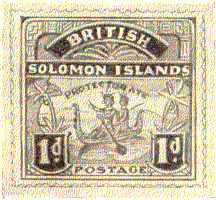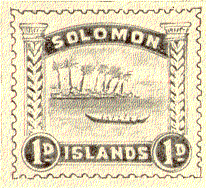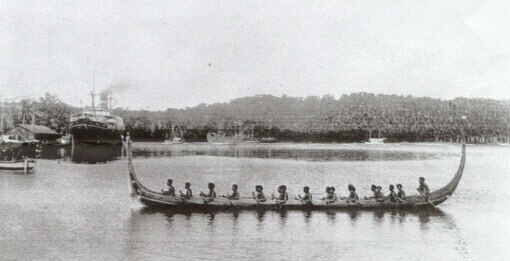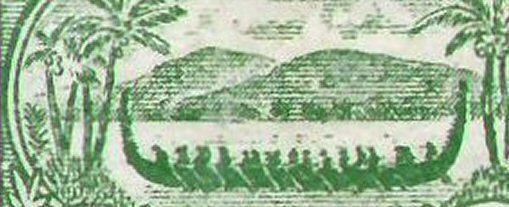 |
Design of the Issue |  |
On a visit to Fiji in 1903, Woodford requested from the High Commissioner for the Pacific, Sir Henry Jackson, that the Protectorate be supplied with Fiji stamps overprinted "Solomon Islands", much like those later supplied to New Hebrides and Gilbert & Ellice Islands. This suggestion was disapproved (Franks). From correspondence quoted in Gisburn, it seems that Woodford hoped that the High Commissioner would handle the provision of postage stamps. When he had heard nothing by November 1906, however, Woodford set about selecting a design for the new Solomons Islands stamps himself. Woodford selected W.E. Smith and Co., a wholesale stationer located on Bridge Street in Sidney, to print the stamps. The printer provided three essays to Woodford for approval; a halfpenny and two penny designs, which Woodford retained (Franks). |



|
It is believed that W.E. Smith and Co. prepared the essays as ink or watercolor drawings and printed a few copies of the designs on samples of the gummed paper that would be used for the actual stamps. (Franks informs us that in March 1919, Woodford sent the essays to R.P. Croom-Johnson along with permission to photograph the items. It is possible that the above- mentioned printed copies were created at that time.) For reasons unknown, Woodford rejected their designs and prepared a design of his own. Woodford's design was a drawing of a tomoko, or war canoe, with an island landscape in the background. He wrote, "The palm trees on either side of the Canoe ...are intended to represent Coco-nut Palms... The three objects in the foreground of the first issue were intended in the design ...to represent one a turtle (Producing Tortoiseshell) in the center, the others a mother of pearl shell and a large green snail shell." (Franks) After Woodford died in 1927, Croom-Johnson wrote his widow inquiring about the original design. She replied, "Of course I remember the sketches, but so far have not come across the originals amongst my husband's papers. I was with my husband in Tulagi when he drew the design of the stamps with Tulagi in the background, palms and canoe " (Franks) Although Woodford wrote that his drawing was taken from a photograph made in Tulagi Harbor, a surviving copy of the photograph is annotated as being taken in Gizo Harbor. (Photo courtesy of a member of The Pacific Islands Study Circle.) |
  |
This canoe could well be the one captured by Woodford described in his Colonial Report for 1899-1900, and quoted by Franks. |
"Provision was made during the year for an increase in the native police force, with a view to the suppression of head-hunting raids. In January it was found necessary to inflict exemplary punishment on a village in the Rubiana Lagoon in consequence of a most cold-blooded raid upon the district of Bogutu on Ysabel. For this all available men were employed both from Tulagi and Gizo. The punishment inflicted was severe, and in addition a large quantity of native property was captured and also the large tomako, or head-hunting canoe in which the raid was made. The latter was nearly new and a very fine specimen of its kind. It is now in use at Gizo station." |